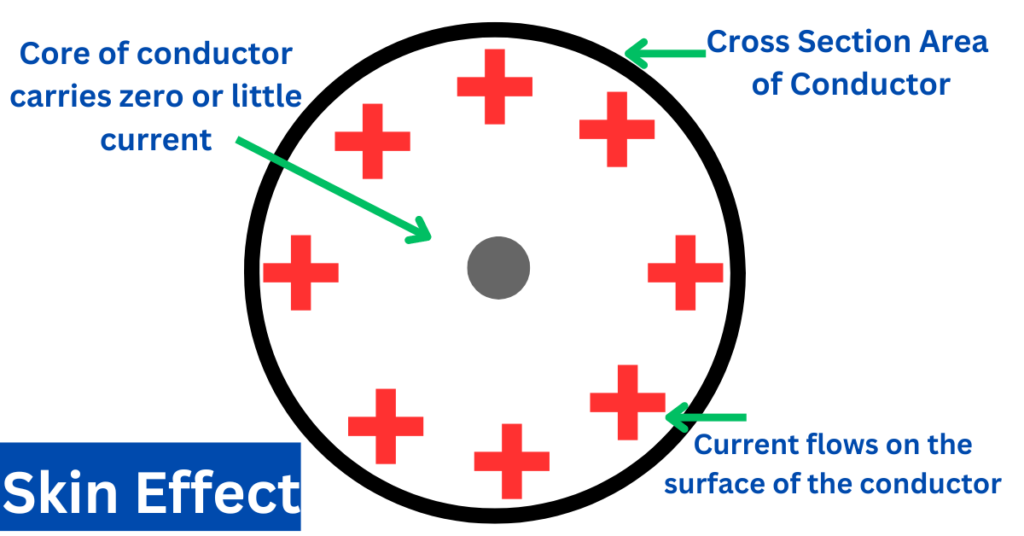Definition: The skin effect is a phenomenon in which alternating current (AC) does not uniformly distribute over the surface of the conductor, and it is concentrated over the surface of the conductor. The current density near the surface will be more than the current density at the core of the conductor for AC. The effective diameter of the conductor reduces when the AC flows on its surface; this leads to increased resistance of the conductor.
The skin effect is more prominent for the high-frequency AC. The current density on the surface increases with an increase in frequency. At low frequencies, the increase in the current density at the conductor’s surface is marginal—however, the entire current flows through the conductor’s surface at high frequencies. The frequency of DC is zero; therefore, the current uniformly distributes over the entire cross-section of the conductor.

Reasons for Skin Effect
To understand the concept, let us consider the conductor comprising multiple concentric cylinders. When an alternating current (AC) flows through the conductor, it induces magnetic flux. The magnetic flux linking a cylindrical segment closer to the center is greater than linking another cylindrical segment closer to the conductor’s surface. This difference arises because the central cylindrical segment is enveloped by internal and external flux, whereas the outer cylindrical segment is surrounded solely by external flux.
The inner cylindrical element possesses higher self-inductance and offers greater inductive reactance than the outer cylindrical element. This variance in inductive reactance causes the current to concentrate towards the surface or “skin” of the conductor.
The current density reaches its maximum at the conductor’s surface, while at the center, it is at its minimum. This effect causes a reduction in the cross-sectional area of the conductor, consequently increasing the effective resistance of the conductor.
Factors Affecting the Skin Effect
- Frequency: The increase in frequency causes more skin effects.
- Diameter: It increases with the increase in the conductor’s diameter.
- The shape of the conductor: The solid conductor has more surface area than the stranded conductor. Therefore, the skin effect is stronger in solid conductors.
- Type of material: The skin effect increases as the permeability of the material increases. Permeability refers to a material’s capability to facilitate the formation of a magnetic field.
Key points to Remember
- The skin effect is insignificant when the frequency is below 50Hz, and the diameter of the conductor is less than 1cm.
- Most currents flow through the outer aluminum layer in stranded conductors like ACSR (Aluminium Conductor Steel Reinforced). At the same time, the steel core, located toward the center, carries little to no current but provides high tensile strength to the conductor. This concentration of current near the surface facilitates the use of ACSR conductors.